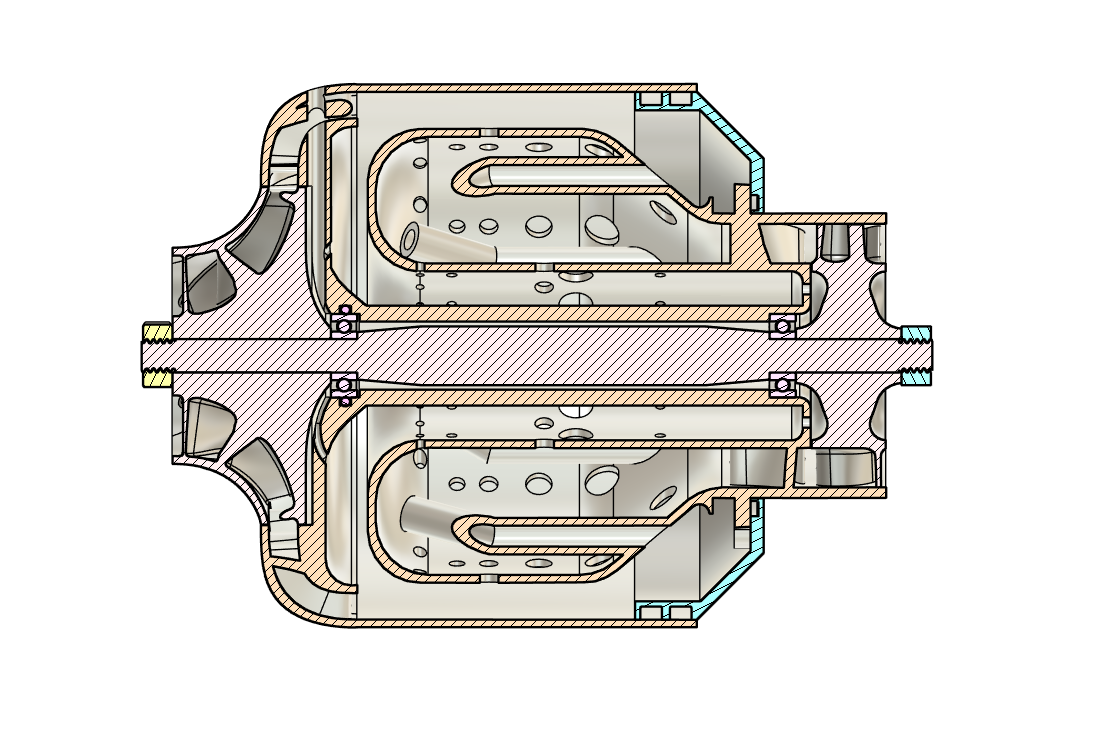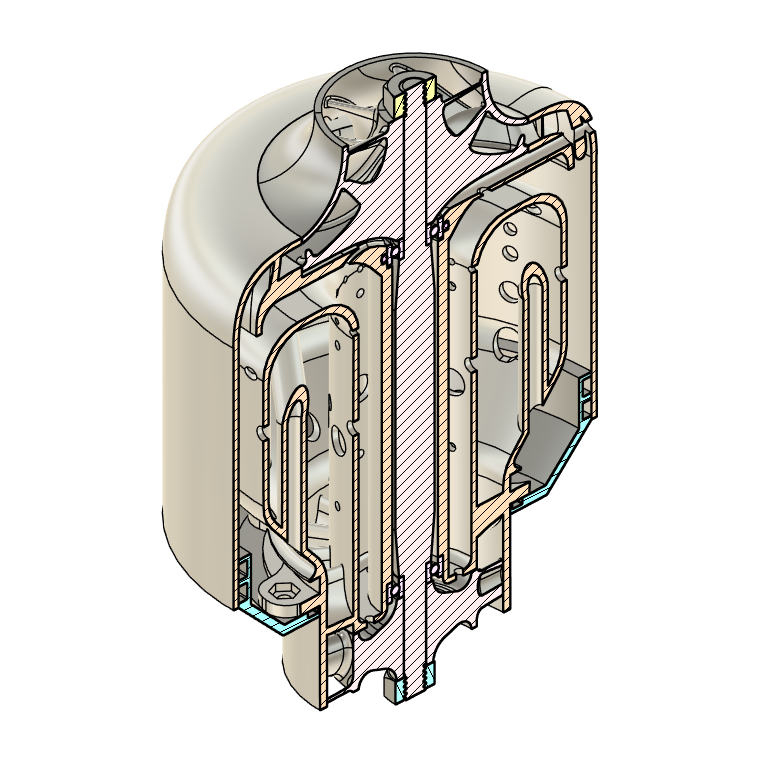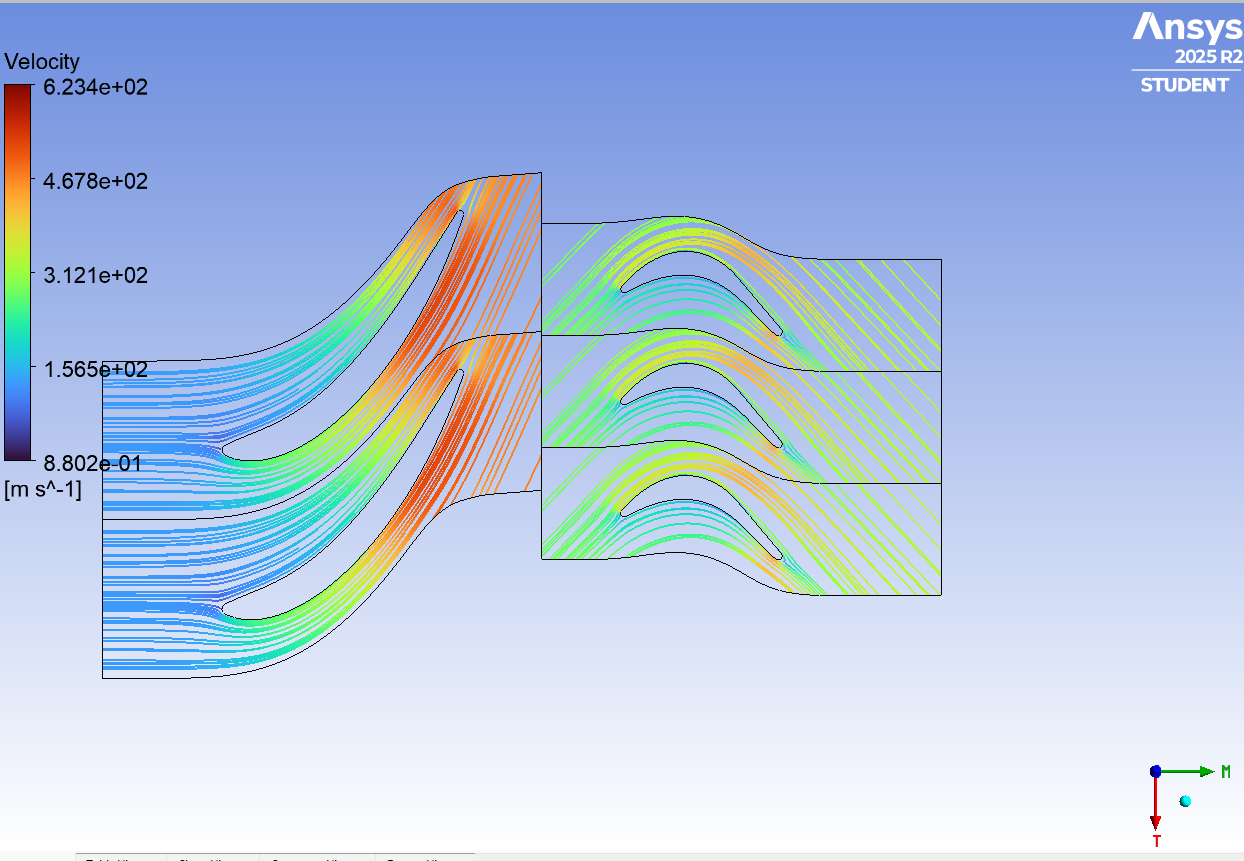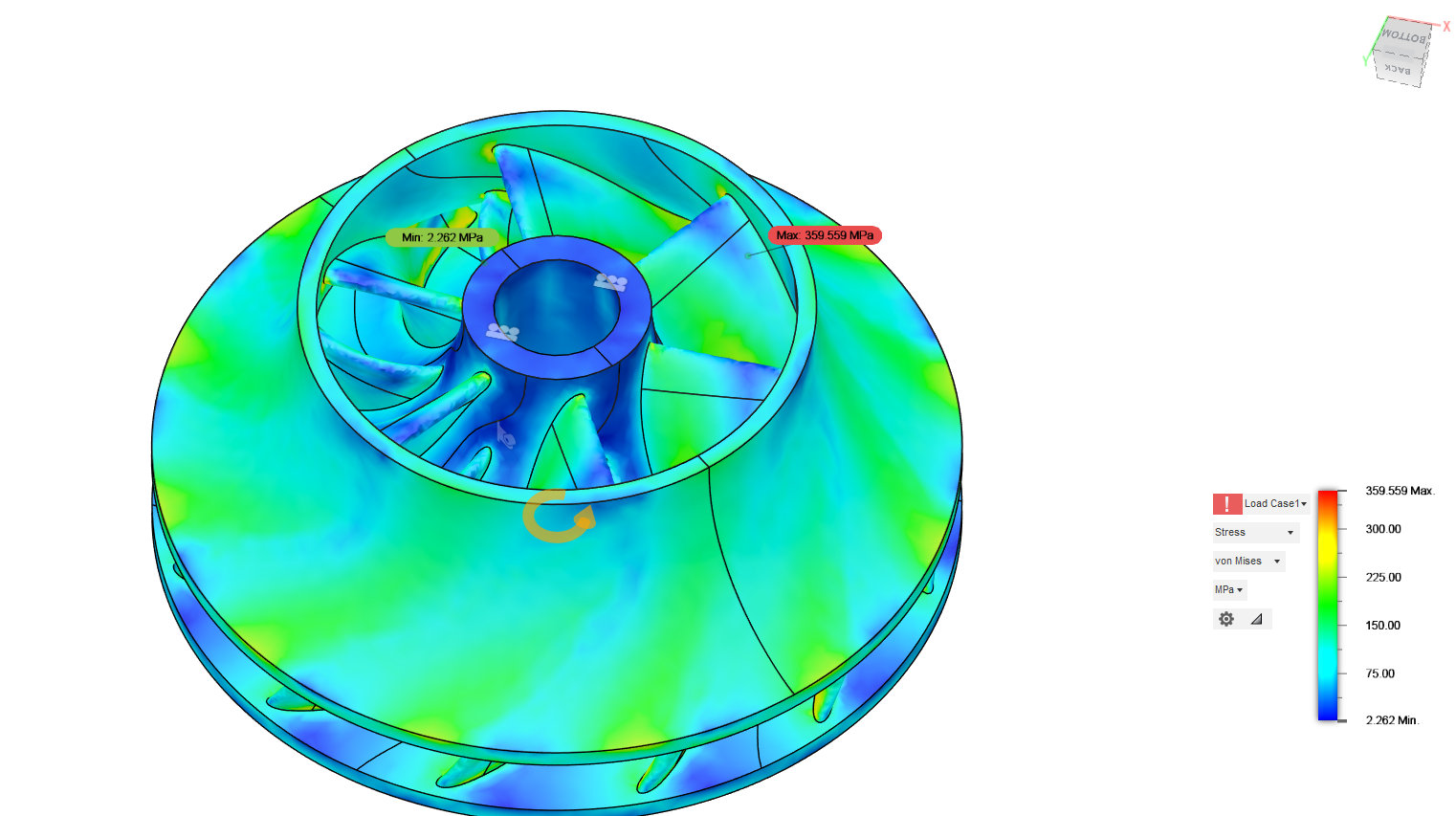Distributed Manufacturing Jet Engine
Low-cost, metal 3D-printed turbojet engine designed for UAVs, hobby aircraft, and RC drones, utilizing distributed manufacturing to dramatically reduce part count and lead times.
Skills
Additive Manufacturing, Metal 3D Printing, CFD Analysis, ANSYS, Fusion 360, CF Turbo, Turbomachinery Design, Heat Treatment, Precision Machining, Propulsion Systems, Mechanical Engineering, Distributed Manufacturing
This project represents a significant innovation in small-scale jet engine manufacturing, developed in collaboration with Alex Boniske and Kagame Rama Munroe at Duke University. Our goal was to create an accessible, producible turbojet engine that leverages modern additive manufacturing to overcome traditional barriers in engine production.
The fundamental innovation lies in our manufacturing approach: by utilizing metal 3D printing for critical components, we reduced the part count from approximately 50 pieces to just 10 major components. This dramatic simplification enables distributed manufacturing - anyone with access to metal 3D printing can produce these engines with minimal machining requirements.
Our design process integrated multiple sophisticated tools: - CF Turbo for optimizing the compressor and diffuser geometry - ANSYS for comprehensive finite element analysis and fluid dynamics simulation of all components - Fusion 360 for detailed 3D modeling and mechanical design - Extensive hand calculations to validate computational results
The technical implementation features several key components: - A precision-machined 4140 steel shaft, heat-treated to 40 HRC hardness and ground to exact tolerances - the only component requiring traditional machining - Metal 3D-printed turbine wheel designed to withstand extreme temperatures and rotational forces - 3D-printed impeller with optimized blade geometry for maximum compression efficiency - Integrated housing structure that combines multiple traditional parts into single printed assemblies - Post-machining operations limited to critical tolerance surfaces after printing
The engine will operate on propane for initial startup and testing, then transition to kerosene for sustained operation - a common approach that provides reliable ignition before switching to the more energy-dense primary fuel.
Our research drew heavily from established works in the field: - "Gas Turbine Engines for Model Aircraft" by Kurt Schreckling - "Build Your Own RC Turbine Engine" by Bob Engler - "Model Jet Engines" by Thomas Camps
These references provided foundational knowledge while we pushed beyond traditional manufacturing methods into additive manufacturing territory.
The project timeline targets completion and testing before the end of the Fall 2024 semester. Beyond demonstrating technical feasibility, this engine aims to democratize access to jet propulsion technology for the hobbyist and small UAV communities by making production faster, cheaper, and more accessible through distributed manufacturing networks.

Technical 2D engineering drawings

3D model of complete jet engine assembly

CFD simulation of flow patterns

Finite element analysis of turbine stresses